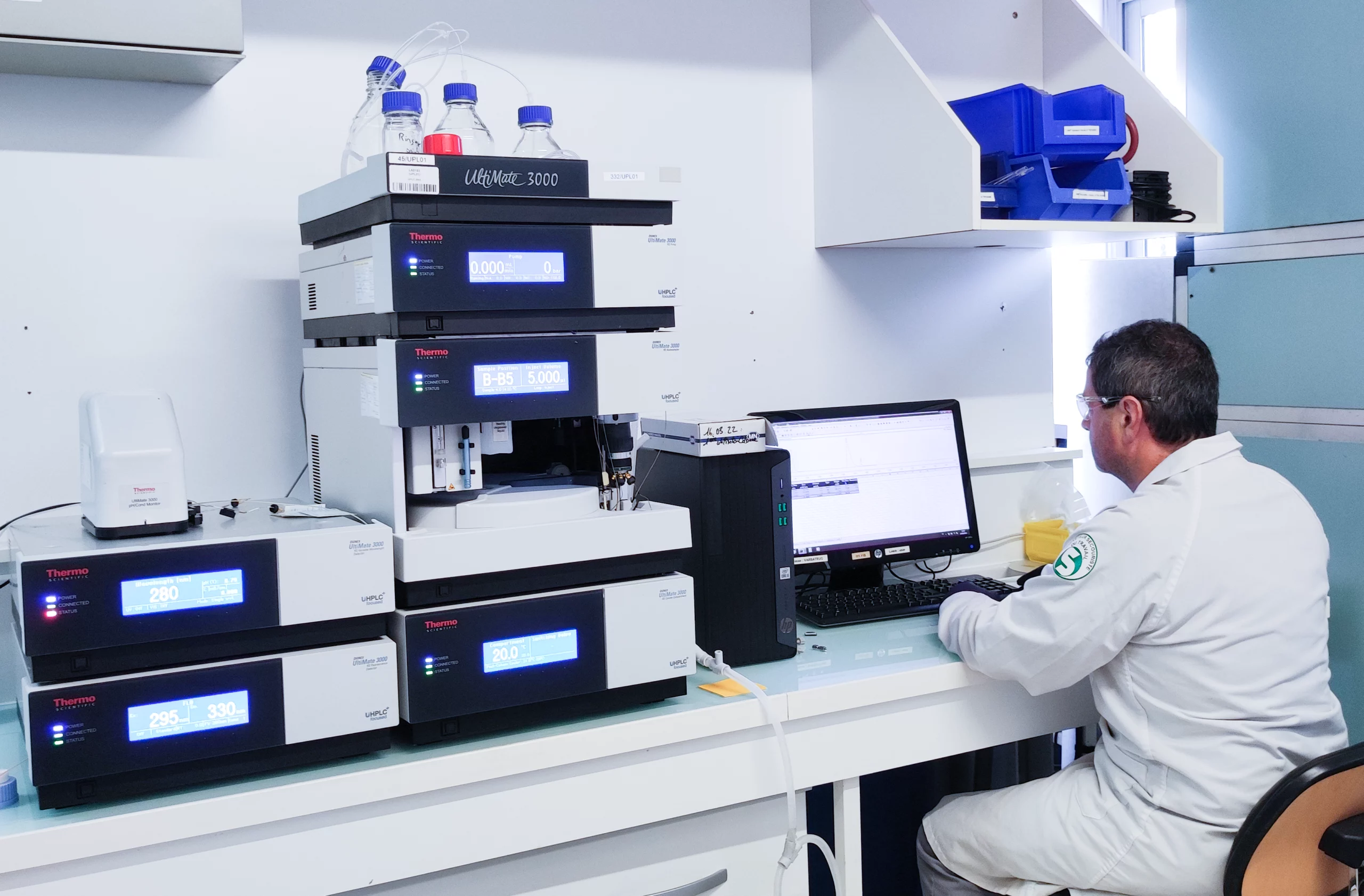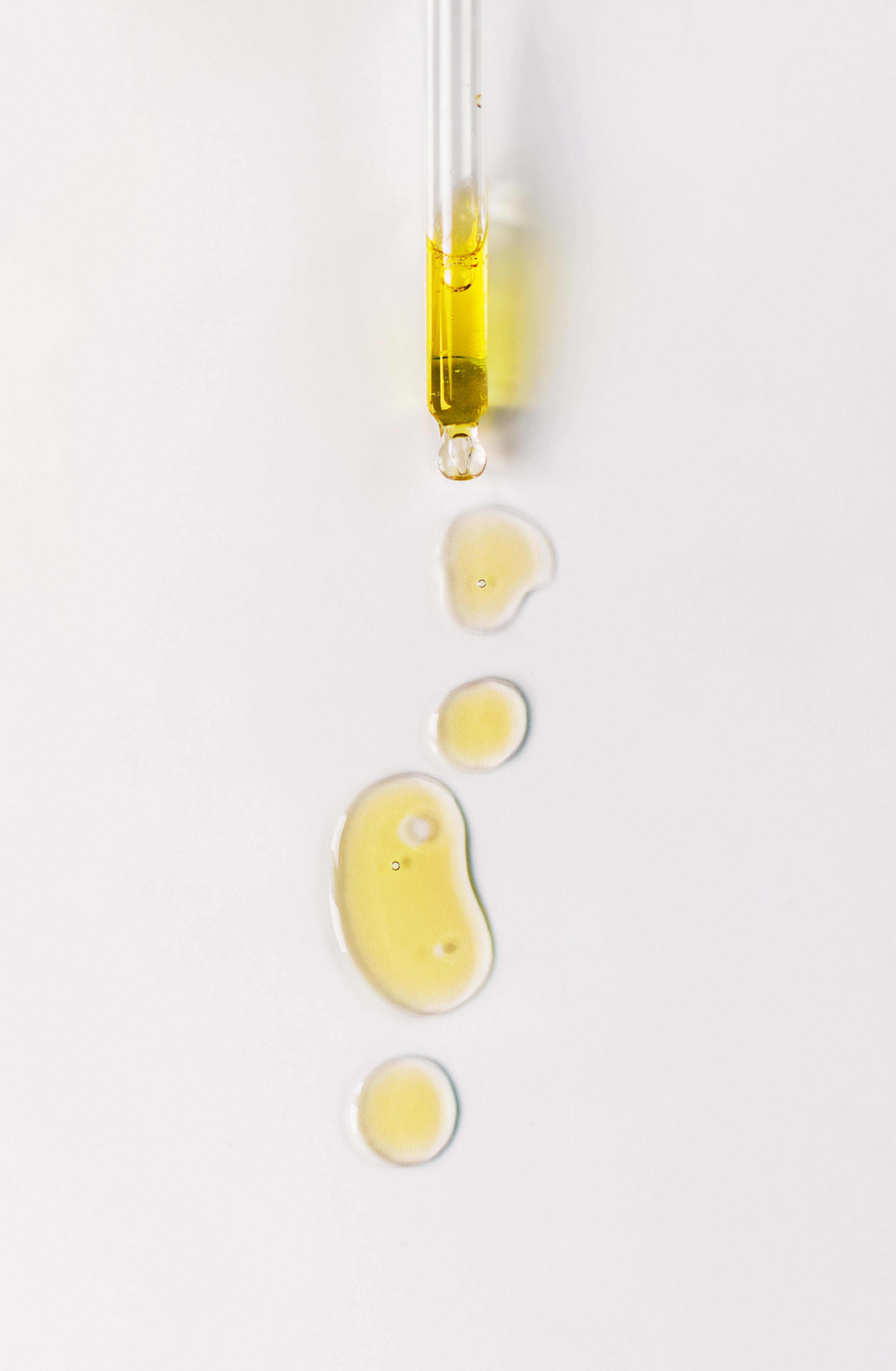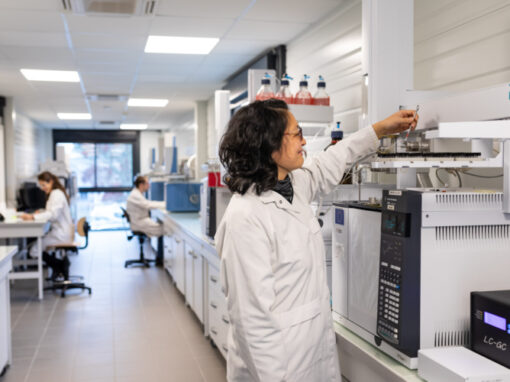
Health safety:
our mineral oil determination method is accredited with a very low quantification threshold
Providing reliable analyses to ensure food safety is a complex and crucial task, requiring advanced technical skills, cutting-edge scientific expertise and in-depth knowledge of current standards and regulations.
The expertise we've built up over the last 10 years in the field of mineral oils means that we can now provide support to industrialists faced with this problem, in the fat-producing and fat-processing sectors, as well as in the food and cosmetics industries.
The search for contaminants is one of the many controls carried out by the food industry to ensure food safety and verify the conformity of products placed on the market with current regulations, such as European regulation EC n°1881/2006. In this context, the oils and fats industry carries out a wide range of checks, not just on contaminants of environmental origin, but also on compounds that may appear during the oil production process. Hydrocarbons derived from mineral oils (MOSH/ MOAH) are currently receiving a great deal of attention.
On 13/09, EFSA published its final opinion on the risk assessment of mineral oil hydrocarbons (MOH) in food, following the public consultation held last spring: https://efsa.onlinelibrary.wiley.com/doi/epdf/10.2903/j.efsa.2023.8215
The accreditation obtained in April 2023 for our MOSH-MOAH determination method, with a very low quantification threshold, attests to the excellence of our laboratories. It also testifies to our ability to adapt to changing needs, by developing a method that guarantees accurate and reliable analysis results.
The presence of MOH in foodstuffs and fats
can be explained in different ways
The presence of MOH in foodstuffs and fats can be explained in various ways:
contamination of the environment and transfer to raw materials, imports during the process, use of lubricants for machines, release agents, processing aids, additives for food or feed, or migration from materials in contact with food, such as waxes contained in cardboard or hessian packaging (Source Toolbox ANIA 2019).
Industrial operators implement all existing measures to avoid possible contamination by mineral oils, and avoid any possibility of contamination at the primary production, collection and transport stages.
What are MOH (MOSH and MOAH)?
1
2
3
1. Mineral oils (MOH) are complex mixtures derived from crude oil consisting of mineral oil saturated hydrocarbons (MOSH) and mineral oil aromatic hydrocarbons (MOAH).
2. MOSHs can be made up of alkanes, isoalkanes + naphthenes, which can give "kerosene wax" or parrafin oil profiles.
3. MOSH can be made up of alkanes, isoalkanes + naphthenes, which can give profiles of "kerosene waxes" or parrafin oils.
What are the regulatory limits?
For MOAH :
The limit of quantification imposed by the European Commission:
- 0.5 mg/kg in low-fat dry foods (≤ 4% oil/fat),
- 1 mg/kg in foods with a higher fat content (> to 4% oil/fat and ≤ to 50%),
- 2 mg/kg in oils and fats (with >50% oil/fat).
ITERG accreditations
- Our method for determining mineral oil content (saturated and/or aromatic hydrocarbons) is COFRAC accredited (scope available on cofrac.fr).
- This method meets a strong demand from our customers for an accredited analysis with a low limit of quantification.
- Our laboratory has invested in an LC GC FID coupling with automatic preparation unit, capable of carrying out the various concentration steps to reach the 1 mg/kg threshold.
To find out more or to request an analysis :
Please complete the contact form and send it to Franck DEJEAN, Head of Analysis and Expertise Department.


